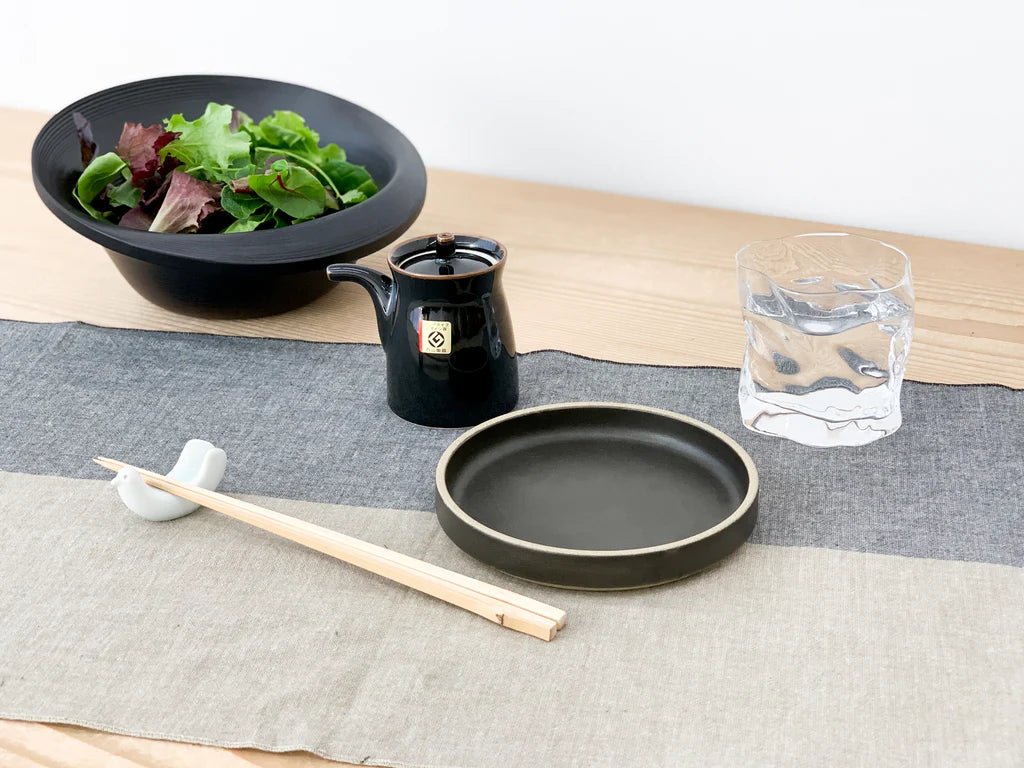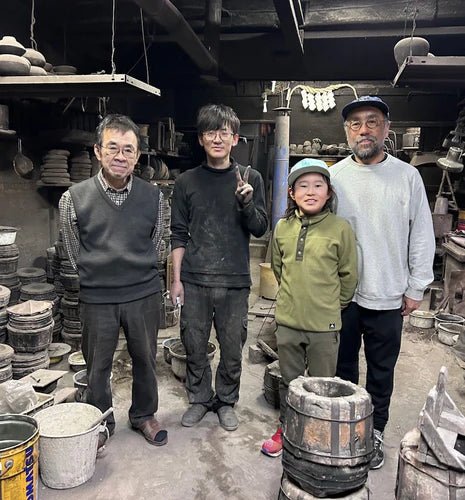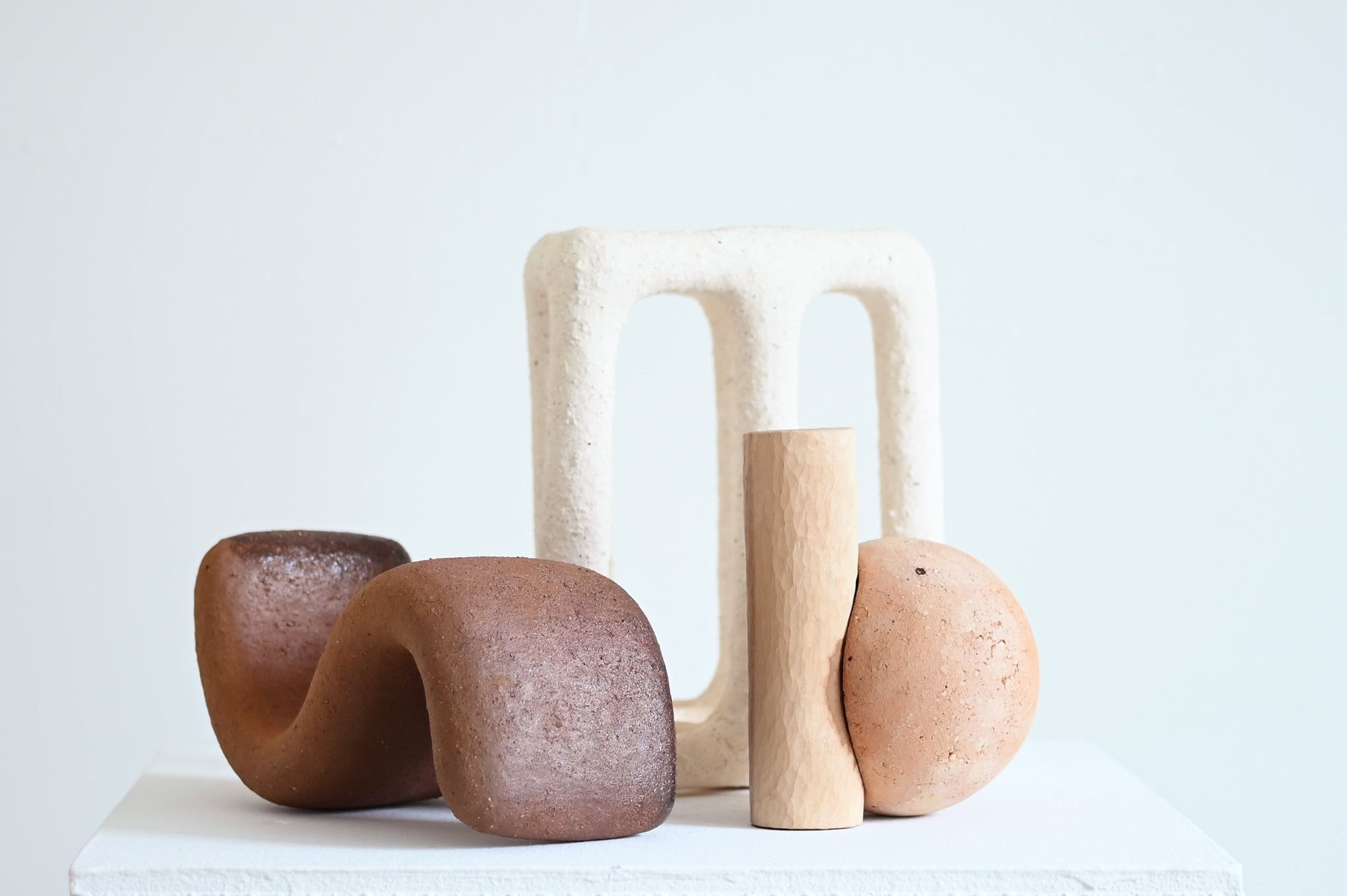If you wandered over to the National Museum of Modern Art in Tokyo in 2002, you might make a few assumptions about what would be on display. Perhaps you would expect a main exhibition of paintings, sculptures, or installations. Monumental art pieces, made by famous artists, priced at hundreds of thousands of dollars. Instead, the central exhibition featured a soy sauce pot. A soy sauce pot you could buy at the museum gift shop for just a few thousand yen.
Elevating homeware ceramics to the level of high art is the greatest legacy of Masahiro Mori. Keep reading to explore the philosophy behind his most iconic designs as the first installment of our #TortoiseClassic series.
In 1927, Mori was born in Saga Prefecture. This region has been home to expert potters for centuries because of the local white stone (amakusa koseki). This stone is ground up to create bright porcelain. Mori’s designs utilize this natural resource to the fullest extent - their glowing, luminescent white is one of his signatures.

Mori became a lead designer for Hakusan Porcelain in 1958. Hakusan (White Mountain in English) has been producing porcelain for over 250 years, but Masahiro Mori gave the brand its distinctly minimalist aesthetic.
Many of our customers are familiar with seeing the Good Design Award on our products. The history of this design award has its roots in the effort to rebuild Japan after World War Two. Established in 1960 by the Japanese Ministry of International Trade and Industry, it was believed that good design is essential and indispensable to everyday life.
Masahiro Mori was the first to win the Good Design Award with his G-Mark Soy Sauce Pot, or shoyusashi, and then proceeded to win the award over 110 times in his life. His products embody the philosophy of the Good Design Award - he is deeply concerned with designs that add beauty and simplicity to everyday families, in everyday moments.

"My pleasure as a designer is to conceive of forms for daily use, and to create pieces for production in the factory, so that many people can appreciate and enjoy using them." - Masahiro Mori

When the G-Mark Soy Sauce Pot was first put into production in 1958, it was around 130 yen. 63 years later, it is still in production.

Throughout the 1960s, Japan experienced a postwar “economic miracle”. Mori harnessed this optimistic economic energy with yet another twist to mass produced ceramics. He designed a series of small animal sculptures, sticking to his mission of making art accessible. These sculptures met the new demand for high-quality material goods, and the playful, evocative expressions on each of the animals represents the time of acute social transformation enjoyed in the 1960s.
Traditional handicraft has been long celebrated in Japan. However, Mori established the idea that products should not only function well, but also have aesthetic value separate from utility. Artistry paired with mass production was unheard of. Although artists could enjoy fame and recognition, until the 1960s, Japanese designers were largely invisible.

Towards the end of the ‘60s, Mori designed one of our personal favorite creations - the Fancy Cups. Mori decided to go beyond visual appeal and celebrate the sense of physical touch. He designed each of the Fancy Cups as cups for the blind - instead of appreciating these creations with your eyes, you appreciate them with your hands. Each cup inspires a slightly different emotion and tactile experience. They also have a function element - for the blind, you can easily distinguish one cup from another with just a grasp. A cup for orange juice, a cup for water, a cup for your partner... all easily separated without needing to look at them.
And for those of us that can see them… they are not only functional cups but also sculptural objects. Lined up in a row, or used as vases, these pieces remind us of the unexpected beauty beneath the surface of household objects.

It is easy to see that “feel” is always a high priority for Mori. Each object sits comfortably and harmoniously in your hand, and beg to get close, to touch, to relate.
The bird chopstick rests, toothpick and ring holders are yet another fusion of Mori’s commitment to artistic sensibility and function. They add a playful humor to everyday moments. You can also see how Mori was influenced by Finnish design in these pieces - these designs were created after Mori’s attendance at a Kaj Franck workshop held in Tokyo.

This dialogue between Japanese ceramics and the rest of the world is another enduring legacy of Masahiro Mori. Mori’s work has been displayed throughout modern art museums in Tokyo, Paris, Wales, Italy, Germany, and the United States.

Mori ended his design career with the “Wa” series for Muji in 2004. His work continues to be enjoyed worldwide, and has been a #TortoiseClassic for over a decade.








